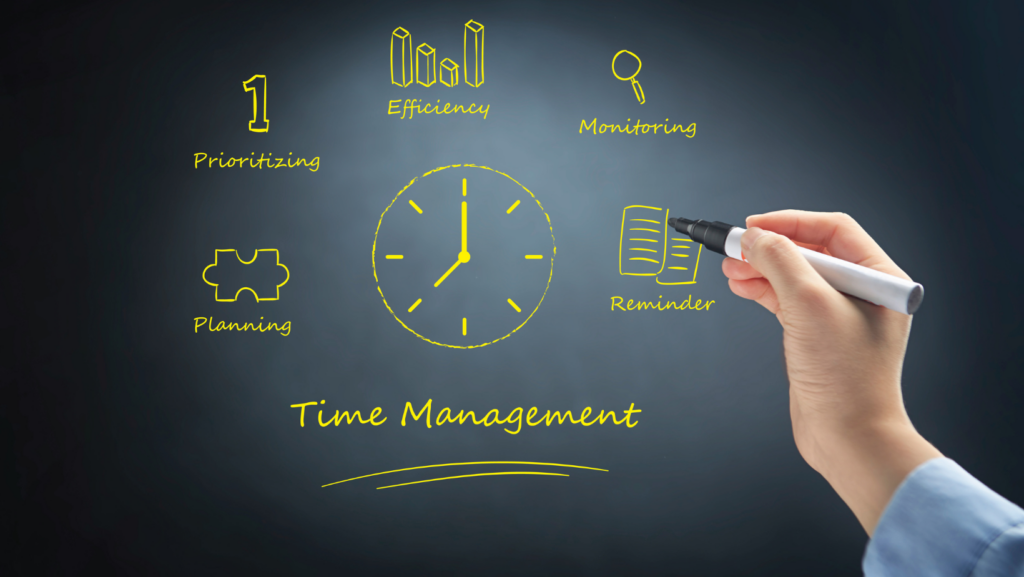In the fast-paced world we’re living in, time management has become a skill that’s more crucial than ever. Whether you’re a student, a professional, or a homemaker, mastering this art can drastically increase productivity and reduce stress. This piece will delve into the essentials of a time management lesson plan, offering insights to help you navigate your day more efficiently.
Crafting a time management lesson plan isn’t just about squeezing more tasks into your day. It’s about prioritizing what matters most and ensuring that you’re spending your time wisely. So, if you’re constantly feeling overwhelmed by your to-do list, stay tuned. This article might just have the solutions you’re looking for.
Time Management Lesson Plan
Enhancing comprehension on the necessity of time management, a lesson plan can act as a practical guide. A well-structured lesson plan focuses on defined learning objectives, interactive activities, and efficient tools and resources.
Defining Learning Objectives
Outlined learning objectives serve as the foundation for the Time Management Lesson Plan. Detailed objectives provide clarity, giving a clear path of what a participant can gain from the course. These objectives can range from recognizing the importance of planning, enhancing prioritization skills, distinguishing between urgent and important tasks, and improving multitasking abilities.
Crafting Interactive Activities
 Interactive activities play a crucial part in maintaining participant engagement and enhancing learning. Often, these activities are designed to reinforce notions outlined in the learning objectives. For example, a practical exercise might involve participants categorizing tasks as per their urgency and importance.
Interactive activities play a crucial part in maintaining participant engagement and enhancing learning. Often, these activities are designed to reinforce notions outlined in the learning objectives. For example, a practical exercise might involve participants categorizing tasks as per their urgency and importance.
To facilitate efficient learning, certain tools and resources are indispensable. This might include scheduling tools like Google Calendar, productivity software, such as Trello or Asana, and traditional methods like daily planners and to-do lists. In the digital age, apps related to time tracking, habit forming, and focus enhancement gain importance.
Key Topics to Cover in a Time Management Lesson Plan
Expanding on the mentioned fundamental elements of a time management lesson plan, this section delves into three key topics vital for effective time management – prioritization techniques, setting realistic goals, and practical application of the Eisenhower Matrix.
Prioritization Techniques
Delving into prioritization techniques, the emphasis remains on understanding their relevance for effective time management. Categorize tasks based on their urgency and importance; for instance, the Eisenhower Matrix does an impeccable job of this, as it’ll be discussed in the later part of this article.
Setting Realistic Goals
 Next in line, setting realistic goals figures prominently in successful time management. Structured goal settings, like SMART goals – Specific, Measurable, Achievable, Relevant, and Time Bound, provide concrete targets.
Next in line, setting realistic goals figures prominently in successful time management. Structured goal settings, like SMART goals – Specific, Measurable, Achievable, Relevant, and Time Bound, provide concrete targets.
Heralding a practical approach, a hands-on experience with the Eisenhower Matrix adds immense value in understanding prioritization. This matrix divides tasks into four categories – Important and Urgent, Important but not Urgent, Not Important but Urgent, and Not Important and Not Urgent.
Implementing the Lesson Plan
For efficient implementation of the time management lesson plan, careful consideration of students’ different learning styles, measurement of plan effectiveness, and commitment towards continuous improvement are imperative. Let’s delve into each of these aspects.
Tips for Engaging Different Learning Styles
There’s an array of learning styles among students – visual, auditory, read/write and kinesthetic. It’s important to incorporate a variety of teaching methods that accommodate these different learning styles. For visual learners, think about using mind maps, diagrams, or charts when lecturing on the Eisenhower Matrix or SMART goals.
Measuring the Effectiveness of the Lesson Plan
 Assessment plays a crucial role in guaranteeing the effectiveness of your lesson plan. Validating the impact of the lesson plan involves assessing students both before and after the teachings. Surveys, formal assessments, and informal feedback sessions provide empirical data for measurement.
Assessment plays a crucial role in guaranteeing the effectiveness of your lesson plan. Validating the impact of the lesson plan involves assessing students both before and after the teachings. Surveys, formal assessments, and informal feedback sessions provide empirical data for measurement.
Regardless of initial successes, it’s crucial to maintain a continuous improvement approach for future sessions. This involves actively seeking feedback from students, reviewing assessment data, and keeping pace with the latest teaching trends.
Must Know
Time management is a crucial skill and designing an effective lesson plan can make all the difference. Remember, the key elements like prioritization techniques and the Eisenhower Matrix are vital. It’s also essential to consider diverse learning styles and measure the effectiveness through assessments. Continuous improvement is a must.



